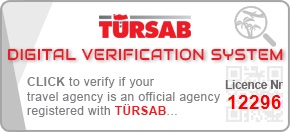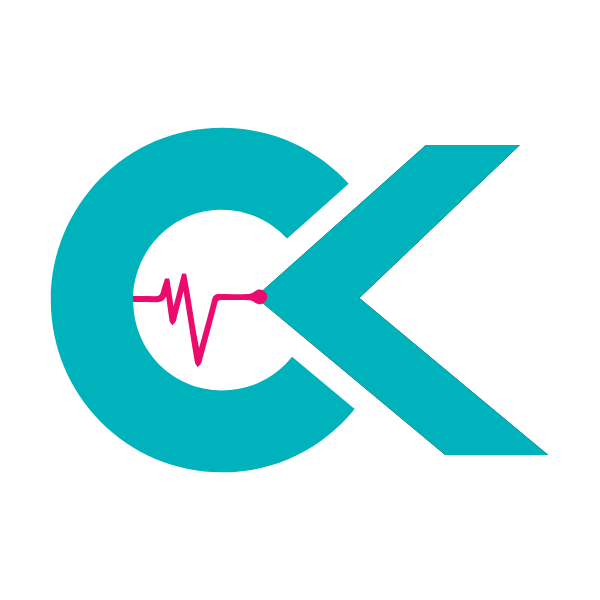For individuals seeking to correct refractive errors like myopia and astigmatism, the advancements in laser eye surgery have provided life-changing solutions. Two of the most prominent procedures available are LASIK (Laser-Assisted In Situ Keratomileusis) and ReLEx SMILE (Small Incision Lenticule Extraction). While both aim to reshape the cornea for improved vision, they differ significantly in their methodology, recovery process, and suitability for specific patient profiles. This authoritative guide delves deep into the ReLEx SMILE vs LASIK eye surgery comparison, helping prospective patients in the United Kingdom understand which procedure might be the optimal choice for their vision correction needs.
Table of Contents
Understanding LASIK Eye Surgery
LASIK has been a widely popular and successful vision correction procedure for decades. It’s an established method that addresses myopia (nearsightedness), hyperopia (farsightedness), and astigmatism by using a laser to precisely reshape the cornea.
The LASIK Procedure Explained
The LASIK procedure typically involves two main steps. First, a femtosecond laser or a microkeratome is used to create a thin, hinged flap on the surface of the cornea. This flap is carefully lifted to expose the underlying corneal tissue. Second, an excimer laser is employed to ablate, or vaporise, a precise amount of corneal tissue. The amount of tissue removed is determined by the patient’s refractive error. Finally, the corneal flap is repositioned back into place, where it adheres naturally without the need for stitches. The entire process is usually swift, often taking only a few minutes per eye.
Advantages of LASIK
- Rapid Vision Improvement: Many patients experience significantly clearer vision almost immediately after the procedure, with further improvement over the following days.
- Minimal Discomfort: The procedure is virtually painless, and post-operative discomfort is usually mild and temporary.
- High Success Rate: LASIK boasts a long track record of excellent outcomes and high patient satisfaction.
- Wide Applicability: It can correct a broad range of refractive errors, including myopia, hyperopia, and astigmatism.
Potential Risks and Side Effects of LASIK
While generally safe, LASIK, like any surgical procedure, carries potential risks, though they are rare. These can include:
- Dry Eyes: Some patients may experience persistent dry eye symptoms post-surgery.
- Visual Disturbances: Glare, halos, or double vision, particularly at night, can occur, though these often resolve over time.
- Flap Complications: Issues with the corneal flap, such as dislocation or wrinkling, can happen, though this is uncommon.
- Over or Under-correction: In rare cases, the resulting vision may not be perfectly corrected.
Exploring ReLEx SMILE Eye Surgery
ReLEx SMILE is a newer, all-laser refractive surgery technique that offers a minimally invasive alternative to LASIK. It is exclusively used for treating myopia and astigmatism. The key difference lies in its approach to reshaping the cornea.
The SMILE Procedure Explained
SMILE uses a single, high-precision femtosecond laser. Instead of creating a flap, the laser works from within the cornea. It is used to create two surfaces – a thin disc of tissue called a lenticule – and a small tunnel to access it. The surgeon then removes this lenticule through the small incision. By removing the lenticule, the curvature of the cornea is altered, correcting the refractive error. This method requires only one laser and results in a significantly smaller incision compared to LASIK.
Advantages of SMILE
- Minimally Invasive: The procedure involves a single, small incision (typically 2-4mm), preserving more of the cornea’s structural integrity.
- Reduced Risk of Dry Eyes: Studies suggest SMILE may result in a lower incidence or severity of post-operative dry eye compared to LASIK, as the procedure does not involve lifting a large flap, potentially preserving more corneal nerves.
- Faster Recovery for Some: Many patients report a quicker return to normal activities, with less initial discomfort.
- No Flap-Related Complications: As there is no flap created, the risks associated with flap complications are entirely eliminated.
- Suitable for Active Lifestyles: The smaller incision and preservation of corneal strength make it an attractive option for athletes or individuals with active lifestyles.
Potential Risks and Side Effects of SMILE
While SMILE is highly regarded for its safety profile, potential risks include:
- Temporary Visual Disturbances: Similar to LASIK, some patients might experience temporary glare or halos.
- Incomplete Lenticule Removal: In rare instances, the entire lenticule may not be removed, potentially requiring a touch-up procedure.
- Difficulty in Lenticule Removal: In very rare cases, the lenticule can be difficult to extract, potentially leading to inflammation.
- Small Incision Issues: While rare, there could be minor issues related to the small incision itself.
Direct ReLEx SMILE vs LASIK Eye Surgery Comparison
To provide a clearer understanding of the differences, here’s a direct comparison of key aspects:
| Factor | LASIK | ReLEx SMILE | Notes |
| Procedure Type | Flap-based laser eye surgery | Lenticule extraction-based laser eye surgery | Both are types of laser refractive surgery used to correct vision. |
| Laser Used | Femtosecond/Microkeratome & Excimer Laser | Femtosecond Laser only | SMILE is a single-laser procedure, which simplifies the required laser equipment. |
| Incision Size | 18-20 mm flap incision | 2-4 mm incision (tunnel) | SMILE’s corneal incision is significantly smaller. |
| Corneal Integrity | Flap is lifted and replaced | Lenticule is removed through a small tunnel | SMILE preserves more of the anterior corneal surface, potentially enhancing corneal strength. |
| Dry Eye Risk | Moderate to high, often temporary | Lower compared to LASIK | Nerves may be less disrupted due to the smaller incision. |
| Suitable for Astigmatism | Yes | Yes (primarily for low to moderate levels) | Both correct astigmatism, but LASIK may be preferred for very high levels. |
| Suitable for Hyperopia | Yes | No (currently only for myopia) | LASIK is the only option of the two for farsightedness. |
| Recovery Speed | Generally fast (24-48 hours for initial visual clarity) | Often perceived as faster, especially initial comfort | Both offer quick visual recovery, but patient experiences can vary. |
| Flap Complications | Possible (rare) | None | The absence of a flap is a significant advantage for SMILE. |
| Visualization | Surgeon sees tissue being ablated with Excimer laser | Surgeon removes the lenticule, sees less direct laser action | Both rely on precise laser delivery. |
Recovery Timelines
Recovery After LASIK
Most patients notice a significant improvement in their vision within 24-48 hours after LASIK surgery. Initial healing involves the corneal flap re-adhering to the underlying tissue. Patients are typically advised to use prescribed eye drops to prevent infection and reduce inflammation. Strenuous activities and swimming should be avoided for about a week, while contact sports should be postponed for several weeks to prevent dislodging the flap.
Recovery After SMILE
The recovery period following SMILE is often perceived as smoother due to the minimally invasive nature of the procedure. Vision improves rapidly, often within the first day. Because there is no large flap, the risk of flap-related complications is eliminated, potentially leading to a quicker return to normal daily activities. Patients are usually advised to avoid rubbing their eyes and limit strenuous exercise for a similar period as LASIK, typically around a week. Some studies suggest a potentially faster return of specific visual qualities like contrast sensitivity.
Factors to Consider When Choosing
Your Prescription and Lifestyle
LASIK remains the preferred choice for individuals with higher degrees of myopia or hyperopia, as well as for those with significant astigmatism. It’s a versatile procedure that has been refined over many years. ReLEx SMILE is primarily indicated for moderate to high myopia and has recently gained approval for certain levels of astigmatism. It is particularly well-suited for individuals with active lifestyles or those who are concerned about the potential for dry eyes. A thorough eye examination is crucial to determine the best fit for your specific prescription.
Corneal Thickness and Health
The thickness and structural integrity of your cornea are critical factors. Both LASIK and SMILE require a certain minimum corneal thickness. Your ophthalmologist will measure your corneal thickness during the pre-operative assessment. SMILE’s method of preserving more of the anterior corneal surface might make it a favourable option for individuals with slightly thinner corneas who are otherwise suitable candidates for myopia correction.
Potential for Dry Eyes
If you already suffer from dry eye syndrome or are concerned about developing it, SMILE may offer an advantage. By avoiding the creation and repositioning of a large corneal flap, SMILE potentially preserves more corneal nerves responsible for sensation and tear production, which can lead to a lower incidence of post-operative dry eye symptoms compared to LASIK.
Cost Comparison: Laser Eye Surgery in the UK vs. Turkey
When considering laser eye surgery, cost is a significant factor for many patients, especially those travelling from the UK. Turkey has emerged as a leading destination for medical tourism, offering high-quality treatments at a fraction of the cost compared to Western Europe and the UK. The ReLEx SMILE vs LASIK eye surgery comparison extends to pricing, where substantial savings can be realised.
| Service | Turkey Price (approx.) | United Kingdom Price (approx.) |
|---|---|---|
| LASIK Surgery (per eye) | £700 – £1,200 | £1,500 – £2,500 |
| ReLEx SMILE Surgery (per eye) | £900 – £1,500 | £1,800 – £3,000 |
| Consultation & Aftercare | Often Included | May incur additional fees |
These figures are approximate and can vary based on the clinic’s reputation, the technology used, and the complexity of the procedure. It’s essential to remember that while the upfront cost in Turkey is significantly lower, patients must also factor in travel, accommodation, and potential costs for additional support.
Scientific Evidence: ReLEx SMILE vs. LASIK
Research consistently compares the outcomes of these two advanced refractive surgery techniques. A systematic review and meta-analysis published in the *Journal of Refractive Surgery* (2018) by Dong et al. analysed data from multiple studies comparing SMILE and LASIK for myopia correction. The findings indicated that both procedures achieve comparable visual outcomes and safety profiles in the long term. However, the study noted that SMILE might be associated with a slightly higher incidence of interface inflammation and a lower incidence of dry eye symptoms compared to LASIK. This aligns with the clinical observations that SMILE’s minimally invasive nature may offer advantages in corneal biomechanics and dry eye management. Prospective patients should discuss these nuances with their surgeon to determine the most appropriate procedure for their individual needs.
The CK Health Turkey Advantage
For international patients, particularly those from the UK, seeking world-class medical treatments abroad, CK Health Turkey stands as a premier choice. We specialise in a range of advanced procedures, including state-of-the-art vision correction surgeries like ReLEx SMILE and LASIK, as well as other significant treatments such as bariatric surgery. Our commitment is to provide unparalleled patient care, utilising cutting-edge technology and employing highly experienced medical professionals. We understand the concerns of international patients and offer comprehensive packages designed for comfort, safety, and exceptional outcomes. If you are exploring options beyond what is available locally, or seeking more affordable yet high-quality care, CK Health Turkey is equipped to meet your needs. We strive to make your medical journey seamless and successful. Explore our services and discover why so many choose us for their health transformations. For personalised advice and to learn more about our vision correction procedures, we encourage you to reach out to our dedicated international patient team.
FAQs
What is the main difference between SMILE and LASIK?
The main difference lies in the method of reshaping the cornea. LASIK creates a thin flap on the cornea’s surface, lifts it, and uses an excimer laser to reshape the tissue underneath. ReLEx SMILE uses a femtosecond laser to create and remove a thin disc of tissue (lenticule) from within the cornea through a small incision, without creating a flap.
Which procedure is better for astigmatism?
Both LASIK and ReLEx SMILE can effectively treat astigmatism. LASIK has historically been the go-to for higher degrees of astigmatism, while SMILE is well-suited for moderate astigmatism. The best choice depends on the specific prescription and corneal characteristics.
Is SMILE or LASIK more painful?
Both procedures are performed under local anaesthesia and are virtually painless during the surgery itself. Post-operative discomfort is typically mild for both, with some patients reporting SMILE to be slightly more comfortable initially due to the absence of a flap.
How long does it take to see clearly after SMILE vs LASIK?
Vision improvement is rapid for both procedures. Many patients notice clearer vision within 24 hours. The flap in LASIK needs to settle, while SMILE’s single incision heals quickly. Full visual stabilisation can take a few weeks to months for both.
What are the risks of flap complications in LASIK?
Risks include flap dislocation, epithelial ingrowth (cells growing under the flap), striae (wrinkles in the flap), or incomplete flap formation. These are rare but serious complications that SMILE avoids entirely.
Can I wear glasses or contact lenses after SMILE or LASIK?
Most patients achieve vision sharp enough to eliminate the need for glasses or contact lenses. However, in some cases, slight residual refractive error may remain, or the need for reading glasses may arise later in life (presbyopia).
Is ReLEx SMILE suitable for hyperopia (farsightedness)?
Currently, ReLEx SMILE is approved and primarily used for the correction of myopia (nearsightedness) and certain types of astigmatism. LASIK is the procedure of choice for correcting hyperopia among these two options.
How does the cost compare between SMILE and LASIK?
Generally, ReLEx SMILE surgery tends to be slightly more expensive than LASIK surgery, reflecting the advanced technology involved. However, prices vary significantly by clinic and region. For comprehensive details on costs in Turkey, you can explore Laser Eye Surgery Prices in Turkey.
Are there any other laser eye surgery options?
Yes, beyond LASIK and SMILE, other procedures exist, such as PRK (Photorefractive Keratectomy). Additionally, for conditions like cataracts, procedures such as Cataract Surgery in Turkey are available. For advanced vision correction beyond standard laser treatments, options like Trifocal IOL: Advanced Vision Correction are also an option.
Does Turkey offer specialized eye surgeries beyond general refractive correction?
Turkey offers a comprehensive range of ophthalmic surgeries. Beyond refractive procedures like LASIK and SMILE, it provides treatments for conditions like Strabismus Surgery in Turkey. Patients with specific needs should consult with specialists.



